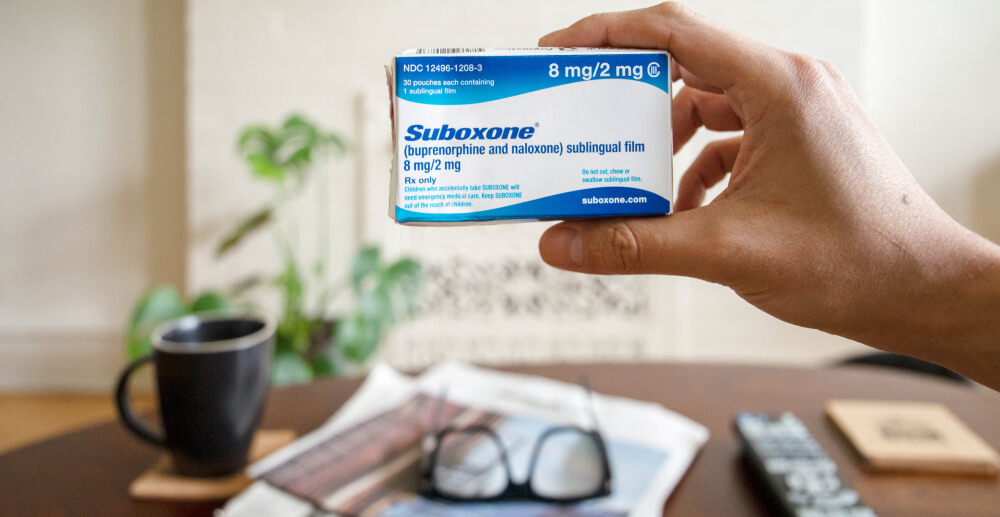Ready to switch from methadone to buprenorphine? Here’s what you need to know.
Opioid addiction can feel all-consuming. In addition to obsessive thoughts and compulsive use, people who are addicted to opioids also have to contend with physical dependence.
Fortunately, there are medications on the market that help prevent users from experiencing withdrawal, while also treating the cravings and helping to decrease compulsive use. In the United States, the two medications that have seen the best results are methadone and buprenorphine.
Methadone has been used as a treatment for addiction since the 1960s when traumatized soldiers were returning from Vietnam addicted to heroin and in need of care. Buprenorphine has been available to addiction patients since the early 2000s. Both medications are considered the gold standard of opioid addiction treatment and have been shown in numerous national and international studies to decrease chaotic use, overdose deaths, and other use-related complications. But some patients fare better on one medication than the other, similar to what you find in treating virtually any condition. For example, because buprenorphine has a ceiling effect and is a partial opioid agonist instead of a full opioid agonist, some patients find that it does not resolve their cravings and withdrawal as well as methadone. On the other hand, some patients get sleepy from methadone no matter the dose and do better with buprenorphine.
Besides side effects and tolerance issues, there are many other reasons why patients might prefer one medication over the other. Sometimes, patients who do well on methadone decide they want to take buprenorphine because they are tired of the restrictions associated with U.S. methadone clinics—which require patients to dose daily and rack up “take-home” doses over the course of several months.
If you’re a methadone or buprenorphine patient and you are not responding well to your medication or find yourself no longer wanting to take it, you don’t have to discontinue treatment altogether. It is possible to switch medications. Switching from buprenorphine to methadone is pretty straightforward; vice-versa, however, is a little trickier. But it is possible.
Start at 30mg or lower
Beginning buprenorphine always requires a short period of abstinence from opioids. If you take it while another opioid is still filling your receptors, it will throw you into a state of precipitated withdrawal. Essentially, you’ll feel like three days of withdrawal were condensed into a few hours. That’s why you have to wait until you are in withdrawal before taking it. When it comes to methadone, not only is it a full opioid agonist, it is also a long-acting opioid. This means that it will stay in your system for a long time, in some cases up to a week or longer.
If you want to switch from methadone to buprenorphine, most clinics advise that you taper down to as low a dose as possible before making the switch—at least 30 milligrams. Workit’s policy also reflects this recommendation; if you’re transferring from a methadone provider or have methadone in your system because you were purchasing it on the street, you have to taper down to at least 30 mg before beginning buprenorphine treatment. In a post from At Forum, SAMHSA Medical Advisor Anthony Campbell notes that some patients may need to taper to an even lower dose. This can be frustrating for patients on high doses of methadone because tapering comfortably can take several months to a year (or longer) depending on your dose and how well you tolerate the decrease. If you are in this position, it’s important to exercise patience. Trying to decrease your dose too quickly will only increase your likelihood of relapse, and cause you unnecessary discomfort.
Essentially, you’ll need to get well enough below your therapeutic dose of methadone to begin to experience withdrawal within 24 to 48 hours. It is important that, if you’re a patient, you work with your clinicians to measure your withdrawal symptoms accurately using the Clinical Opioid Withdrawal Scale (COWS). This checklist of symptoms can help you determine how severe your withdrawals are, and whether it is safe to take your first dose of buprenorphine. Work It advises that, when switching from methadone to buprenorphine, you should be scoring a 12 or higher using COWS.
Low doses help make the process safer
Another important precautionary measure is to begin induction with a low dose. While patients going from a short-acting opioid like heroin are typically safe to begin at 8mg of buprenorphine (as long as they are in withdrawal before they take it), because methadone is long-acting, patients are advised to take smaller doses. Work It recommends starting at 4mg, but if you feel more comfortable taking a smaller dose, do what feels safest for your body. When using this method, take your beginning dose, wait one hour to see how you tolerate it, and then take your next dose at the same amount if there are no side-effects. This is important because if there is still enough methadone in your system to trigger precipitated withdrawal, the smaller dose will ensure that it is less intense than it would be if you took a full 8mg.
Some researchers have experimented with administering microdoses of buprenorphine on patients taking full opioids like methadone in order to limit withdrawal symptoms withdrawal. The doses were small enough that they were unable to knock a significant portion of the opioid out of the receptor. As the low-dose buprenorphine built up, doses of the full opioid were brought down, until the patients were ultimately able to discontinue the methadone or heroin and take only the buprenorphine. This method is still in the experimental stages, so please don’t try it at home! Misadministering the buprenorphine could be dangerous, as you could send yourself into precipitated withdrawal with too high a dose. But it’s great to know that there are folks out there working on ways to get patients transferred from full opioids onto buprenorphine without any withdrawal!
If you no longer wish to be on methadone but do want to continue using pharmacotherapy to help manage your opioid use disorder, you can safely transfer to buprenorphine. It is not a fast process, but it’s worth the wait to avoid precipitated withdrawal and start your medication right. Just think of it as a new way to practice that fiendish trait known as patience!








